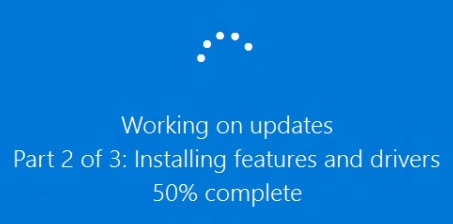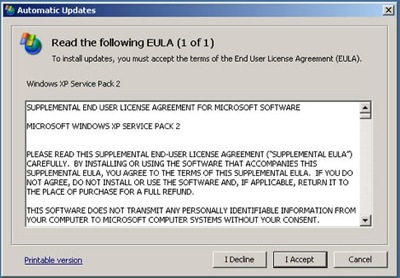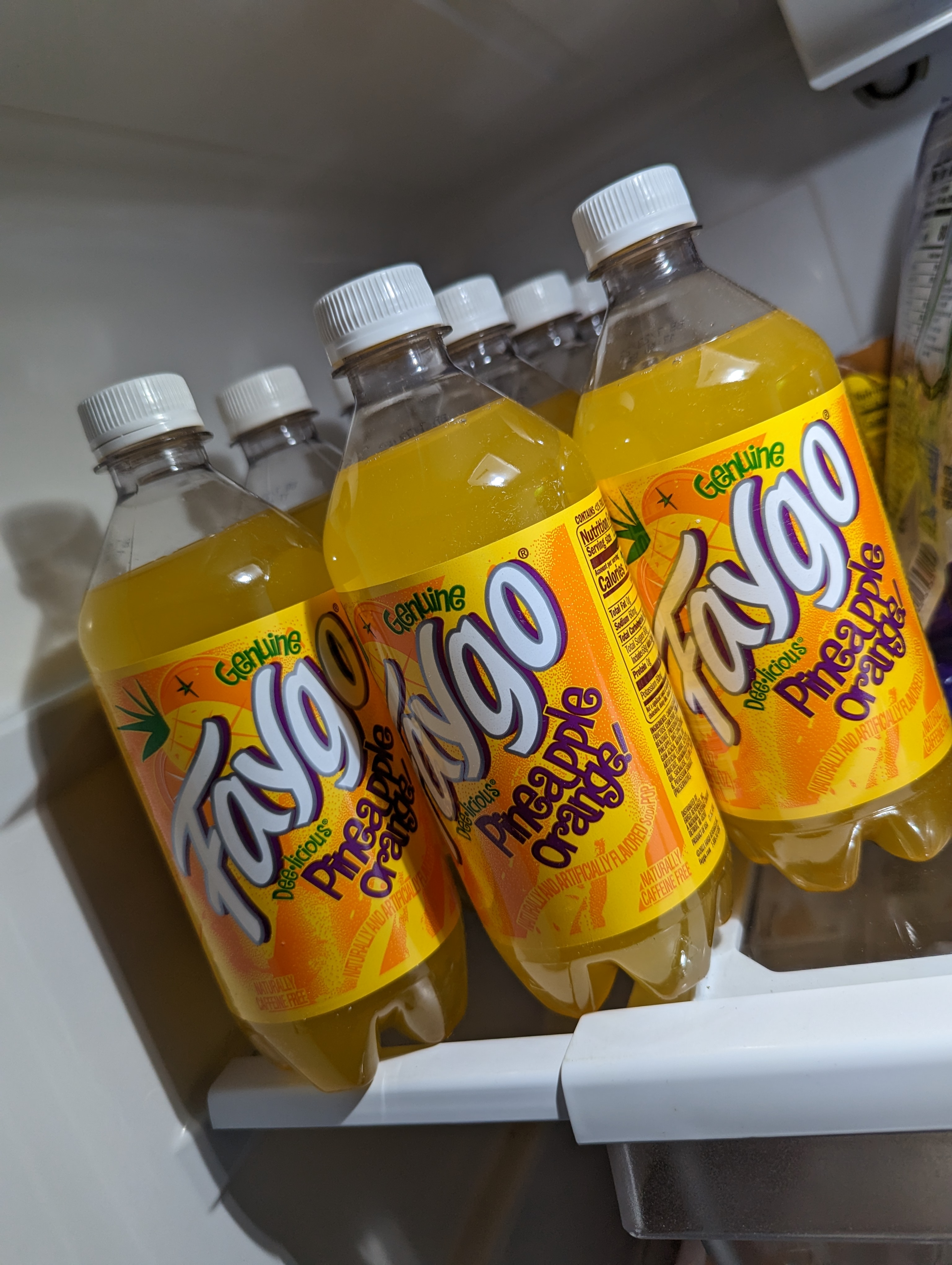Reserved bandwidth??
Some sort of hidden, concealed, clandestine internal QoS implementation in Windows. Reserving a portion of network bandwidth for high priority traffic sounds like a good concept, but I don’t like the fact that this is so hidden (I’ve been working with computers for many years and I’ve never heard of it until now), and that the mechanism to determine the priority of a packet is unknown.
https://www.makeuseof.com/windows-limit-reservable-bandwidth/
It’s not as scary as it sounds.
It’s not, and in a vacuum I don’t think anyone would mind. It is the fact that it is concealed that is really shitty.
“It reserves bandwidth for high-priority tasks such as Windows Update over other tasks that compete for internet bandwidth, like streaming a movie”
As much as I’d like to keep my system up to date (and I really do), if I’m watching a movie then that is my priority. Any task I’m currently using the bandwidth on, should be considered my system’s priority. This is akin to rebooting the computer when it determines it is necessary, with the user having little control to stop it; it’s intend isn’t malicious, and it is meant to protect the user, but all it achieves is upsetting the user and make us find ways around it or turn it off completely.
It’s used for updates. I’m not sure if it works all the time.
I think that it used to be called
superfetchin the old days. https://answers.microsoft.com/en-us/windows/forum/all/superfetch-service-disable-helps-to-increase-speed/3c4d5b4b-edef-4eb7-9456-52fd304e606cIf you’re using an “unofficial” license, it’s probably normal to disable updates and afferent services.
I remember from years ago when I was modding Windows XP installations with nLite to try to purge all the unnecessary bits and install some useful stuff. Superfetch was this annoying service that supposedly ruined online gaming due to lag. :)
Prefetch and superfecth are just obnoxious services that waste disk space. You can safely disable them, there is no downside to not using prefetch or superfect on modern SSDs. On regular spinning drives, yes, they did make loading programs a bit faster.
Superfetch was keeping an index of file relationships in RAM and pre-loading files you were probably going to use next. It didn’t ping your network at all, but it could easily eat up a ton of disk resources and RAM. It was really only an issue on old 5400rpm laptop HDDs from what I remember.
Might be thinking of windows search indexing.
Yes, disable Windows search indexing as well. No point in having that on an SSD, it’s pointless, it just wastes disk space.
I mean that only matters for people like us.
99.99% of the Windows user base doesn’t give the tiniest semblance of a shit about any of that. Hell I run Windows on my gaming pc still and have never had cause to do any of that.
what if you wanted to show a presentation but windows said 
I’m going to be honest with you, as often as this has been memed and for as long as I have been using Windows on my work computer, I have never once been forced to restart on the spot by an automatic update.
I’m sure those who have will be quick to reply but at this point I’m 90% confident it’s a loud minority.
I’ve seen an entire factory shut down for hours because two critical Win10 computers tried and failed to update. It’s never an issue until it becomes one.
Plus a failed update is the whole reason I nuked my C: drive and switched to Manjaro (now running Arch, put down the pitchforks).
Well, running Windows 10, a consumer user-oriented operating system, to control mission-critical machines is mistake number 1.
This wouldn’t have happened if they had used Windows Server or something actually designed for that task (like Linux!).
Neither of those options were available. It was written by a third-party for some old .NET Framework version, and the server and GUI components were written as a single application. Putting it on a server wasn’t an option either because the application’s GUI was constantly used for the management of assembly machines, and other applications were used for monitoring and administrative stuff.
If you had been there, you’d know why this was a low-priority risk. That place was bleeding from a thousand wounds. At least this had some redundancy, for all it was worth in the end…
(edit) I actually contributed to that software, even though it’s not open-source! I managed to nail down an issue where loading a project file using one locale would result in a crash, but not in others. The .NET stack trace was printed to an XHR response’s payload and I used that to locate a
float.ToString()call whereCurrentCulturewas passed as the cultureInfo instead ofInvariantCulture, so depending on the computer’s locale, it would try to parse CSV data either using a decimal dot or a decimal comma. I mailed this to the maintainer and the fix was released within the month.Windows Server is an option.
The operating system is called “Windows Server”. It doesn’t necessarily have to run on a mainframe. It has the regular Windows GUI (with a few differences, the first you’ll notice is “Cntr+Alt+Del to log in”) and can run regular Windows programs.
Or even just running the critical machines offline
Yes, because even once is too many.
In a corporate, I spent an hour and half every morning waiting for Windows to update. Then my coworker handed me Fedora DVD and I never looked back.
I’m saying it’s never happened to me. Not once. Zero times. Zero is less than one.
Normal Windows updates don’t take an hour long. Give me a break. The ones that do are the version upgrades. That’s like the equivalent of a distro upgrade.
Sure, your experience may be different.
That happened in 2013 with random laptop they gave me. I kid you not it took that long, could have been a bug somewhere in the OEM, never cared enough to find out.
But my experience is just as real as much as yours.
Normal Windows updates don’t take an hour
Correct. But who can tell the difference beforehand between a normal update and an abnormal one? The problem is Windows tends to hide those details. I’ve sat on support calls where a server needs to be rebooted for some configuration change, and Windows insists on applying updates because hey, you’re rebooting anyway, so what if it takes 1/2 hour to do this thing that should take 5 minutes…
Sure Windows gives you warning, but after a while it FORCES you to install, even if for whatever reason that new branch bricks your computer. I had a good 6 months of that where every time my computer got shut off, it would force the update and fail like 40 times before it finally let me revert and use my computer. There was no way to tell it to STOP UPDATING
deleted by creator
Open services.msc, disable the windows update service, and set the start type to disabled. The go to C:\Windows\SoftwareDistribution and delete the entire folder.
Near 25 years Linux desktop user, only use Windows when for example helping out family, need to do crap on windows at work, that sort of thing. I’ve seen this so SO many times, especially when you want to shutdown or reboot now, but WAIT! THERE IS MORE! Windows is updating without asking for the next 30 minutes, don’t shut down, screw your planned date. This most have happened more than 30% of the small amount of times I touched windows and it taught me to stay the f away from that stuff, don’t want to touch it with a 10 feet pole
It’s more like when you shut the laptop down, then turn it on only to be greeted with such message. So, I also haven’t seen much of those back when, but only due to the unhealthy habit of maximizing uptime.
I am with you but it’s the wrong place to be discussing this.
That is on you for using a Home license and not a pro license.
I am currently dual booting and trying to get feature parity in my Linux install as a reletave newbie.
So far the largest hurdle I’ve been able to solve was getting my RAID array recognized. That sent me down a rabbit hole.
To get it working in Linux I needed to:
- switch from LMDE to Mint proper
- add a PPA repository
- install the RAID driver
- manually edit my grub config file to ignore AHCI
- run a command to apply the change
- reboot
- format the volume
To get it working in Windows I needed to:
- format the volume(Windows gave me a popup with a single button to do this on login)
You’d normally use a software raid implementation these days, and Linux has a number of those. But yeah, dual booting can expose some quirks and filesystems and disk setup in general is one of the most prominent.
This. How an advanced use case is accomplished is not a point against a system’s usability.
The point I was trying to make is that if you ever want to do something that is not covered with an out of the box install, it’s typically far harder to do in Linux than in Windows (although my ~15 years as a windows sysadmin probably bias my opinion)
Windows is turning into a telemetry nightmare because about 10 years ago Microsoft figured out that they could sell ad space and monetize user data, so I’m trying to get off the platform before my LTSC install hits EOL. But I have to admit it’s a hard path.
Now do a raid like it’s typical for Linux and get it to work on Windows.
Oof, hoops you have to jump through to get two disks in a mirror on windows still haunt my dreams sometimes
(although my ~15 years as a windows sysadmin probably bias my opinion)
So basically: it’s not any harder in linux, but you have more than a decade of muscle memory in windows, so it’s harder for you.
That’s like saying “Japanese is a less efficient language than English, all of the words are different, and when I want to say a word, I have to learn it first, but in English I just know the words! English is so much better! (My 30 years speaking english probably bias my opinion)”
Things are certainly different, but its hard to compare which is “harder” for the advanced use cases.
There’s no shame in having long term experience with one platform and having that shape your expectation about how a solution should look.
But in your example raid controller driver was covered in an out of the box install in windows. If it wasn’t you’ll still need to do pretty much the same. Also there was a couple of weird steps in your linux list like switching DE to run a couple of CLI commands and disabling AHCI for some reason.
Congrats on taking the plunge. I suspect there are others like you.
I’m actually kind of envious. The joy and frustration and joy again of exploring something new was something I relished in my early Linux years. Back then you had to use a text editor to configure your video card before even getting started, so it was kind of insane haha. But totally worth it later, as all of those skills translated.
For advanced, power user stuff, I find Linux to be much friendlier and faster. Just being able to do everything in a Terminal instead of having to mess around with a mix of inconsistent GUI menus in the two different control panels, gpedit, regedit (which is an entire headache by itself), a mix of cmd and Powershell (and whatever Windows Terminal is) is just so much less of a headache.
Also I find things easier to script in Linux compared to Windows.
Not to mention the mess that is Windows Update, which doesn’t even upgrade third party software, and takes a long time to actually do the updates. Package management is a godsend. Windows has chocolatey and winget, but those are poor substitutes.
And I say all of this as someone who is technically proficient in both.
This is kind of the same situation I’m in, but I’m not quite as tech savvy and I’m more resistant to learning linux even though I’ll still probably want to migrate over at some point.
What I don’t really understand is, or, what I understand, but I suppose I find mildly amusing, or confusing, is how many criticisms I’ve seen of windows that kind of just don’t apply to LTSC as much, if at all? It’s kind of to the point where I wonder why anyone would really use any other version.
20 years ago it was PCMCIA wifi drivers.
Now it seems like it’s always some kind of disk boot filesystem issue.
Are you using hardware RAID? yeah, that doesn’t go too well with Linux… works perfectly in Windows though, cuz their softraid solutions are shit.
Proprietary RAID in linux is a shit show. That’s why everyone uses software RAID.
After a while, you’ll hit a point where parity is impossible going the other way.
I’m running a striped partition and a mirrored partition with only two drives, and using an SSD to bcache the whole thing. I’ve even got snapshotting set up so I can take live backups.
I have no idea where to start with that setup on Windows.
I’ve been using Linux for too long because that list of steps sounded completely reasonable to me.
20 years ago, a friend said “Windows does whatever you don’t tell it not to do”. It is as true now as it was then.
90% of configuring Windows is disabling shit.
To the reader that needs it and is too afraid to ask: https://github.com/LeDragoX/Win-Debloat-Tools
deleted by creator
Look at that powershell nonsense. We had shit for this already Microsoft.
I mean, you don’t HAVE to do any of that stuff in Windows, it’s just helps a bit.
I’m sure there are plenty of windows horror stories. But almost every Windows computer I’ve had in the last decade, both custom and OEM, has worked pretty well out of the box. And almost every Ubuntu computer I’ve had over the last decade has had problems that weren’t trivial to fix.
I like Linux, but when people compare these problems like they’re the same just are missing the point.
Yep exactly this. The user friendliness and likeliness it just works is much higher for Windows.
If it doesn’t work for Linux I’ve found it also will generally take much longer to figure out and fix.
The true test is, would you install it for your mom. Have fun figuring out her public library and ereader shit on Linux.
Sure, but then I upgraded my working out of the box Windows 8 machine to Windows 10 and it became unusable because it has a hard drive, not an SSD. Select between running an unsupported system and being able to use your computer without it stuttering every 2 seconds…
The reality is, for 98% plus of windows users, NONE of that matters. MS could give a shit about tech. nerds that want to de-bloat, reduce resources, install crazy niche thingyawidget…
Pretty much everyone in this community is not their target.
Car analogy! You are car guys running custom block modified street racers shitting on electric cars…
Good old transportation analogies, we can make up anything with them.
Fedora/Mint is a free (electric) bike. Arch is free system to order bike parts and instruction how to assembly whole one yourself for free. Gentoo is an automatic parts molding machine. Linux From Scratch is a book about bikes. Windows is a Segway.
“Bikes are only free if you don’t value you time” “Segway 10 is much easier to use, buttons are more intuitive than manual steering and if you know this Konami code you can ride without an account too!”
Considering many electric cars also spy on their users and have anti-features, it’s probably a good analogy :)
I think a Corolla is a more appropriate analogy. You should see some of the Tesla swapped modded cars
“Windows Reserved Bandwidth” is just a QoS Packet Scheduler. The Linux Kernel has this too. Equally difficult to disable on any system, because its assumed you will want to be able to download a file and surf the web at the same time. You can turn it off I guess, if quality of service isn’t your vibe.
It’s always funny seeing users doing their cargo cult dances when troubleshooting stuff
Shocked Pikachu face when other stuff starts breaking because you ‘optimised’ 500 settings
Windows Reserved Bandwidth” is just a QoS Packet Scheduler. The Linux Kernel has this too. Equally difficult to disable on any system, because its assumed you will want to be able to download a file and surf the web at the same time.
Do we know for a fact that the Windows marketing telemetry does not use any of this reserved bandwidth? Or are we just taking the vendor’s word for that?
I asked because ‘reserving’ is different than ‘prioritizing’. Generally speaking, a QoS prioritizes, where what’s being described by the title is reserving.
Microsoft: [implements a common OS feature]
You: But can you prove it’s not malware?
That’s just tinfoil hat paranoia.
Based on what they did with Win10 and 11, not paranoia at all.
because it’s* assumed
Learning Linux is learning how to use a computer.
Learning Windows is learning how to avoid big companies will when you want to use your computer.Learning Linux is learning how to use your computer
Learning Windows is learning how to use their computer
Lol
Windows: Cannot print because error.
User: What error?
Windows: What error?
Seriously, what’s up with Windows software always never showing an error logs?
Depending on what you need logging for, you may need to enable it in Event Viewer or manager. It’s really stupid sometimes.
Windows is easy to use if you don’t care about privacy.
Can’t even move the taskbar to the top of the screen
The worst part is their excuse for not doing it. They’re under the impression that not enough people care about it, so it’s not worth implementing, and in explaining that they make it sound like it’s some great effort to make taskbar-related context menus pop up from the top instead of the bottom. Literally just having the volume or whatever menu pop up in relation to the top instead of the bottom. It’s the craziest fucking thing I’ve ever seen, especially since like five different free apps and a couple paid ones already have done it. A few hours worth of coding and testing is apparently too expensive time and money-wise for literally Microsoft to bother spending.
Tali Roth then explains that “when it comes to actually being able to move the taskbar to different locations on the screen, there are a number of challenges with that. When you think about having the taskbar on the right, or the left, all of a sudden the reflow and the work all of the apps have to do to have a wonderful experience is just huge.”
https://www.howtogeek.com/114501/microsoft-explains-why-you-cant-move-the-windows-11-taskbar/A wonderful experience they say. Jesus fucking christ. I haven’t had a “wonderful experience” since Windows 98 and that was largely because I was 12 and didn’t know any better.
Win98 sucks balls big time though. It’s just DOS with a UI, unstable AF.
All Windows sucks balls big time, like I said I was 12 and the only other OS I experienced before that was mac when it was still black and white and whatever the hell was on the apple II
You can with Windows 10.
For me, it is just too ugly
Meme’s not wrong and I daily Linux, but how we got here is all that crap on the bottom has a pretty low chance of leaving you bricked and getting back from bricking windows is usually marginally trivial. The same people get lost in Linux, don’t read warnings, do stupid shit without thinking then spend forever trying to muddle through how to fix it. Mr. LTT did it himself.
If Linus is good for anything, it’s being a perfect example of the average moron who thinks they know everything so they actively refuse new information.
verage moron who thinks they know everything so they
I had such high hopes when he and Luke started that challenge. If they would have made it, we’d probably have twice the uptake we have now. But because he has to drop out to cli and do stupid crap. He could have run Ubuntu with Unfree and used straight GUI installs and have been in steam in 15 minutes.
Honestly I’ve had way more completely bricked Windows installs than Linux. Don’t think I’ve ever managed to completely Bork a Linux install except when doing something extremely stupid. I’ve had Windows get to the point where no amount of SFC of dsim could get to go boot again just by having the power go out during an update or other fairly mundane issues.
Like accidentally mounting your root subvolume in your home directory while it’s still mounted as root. I mounted root to a directory called games in my home folder. I noticed some crap in it after accidently copying the contents of the wrong directory into it and without a second though
rm -rf games/*Before I knew it, I saw my desktop unload before my eyes until I was left with nothing but a solid white _ in the top corner.My home folder was on a slow hard drive and I was trying to make a subvolume on the small but fast SSD. I ended up just making a symbolic link to a folder on root after reinstalling.
ore completely bricked Windows installs than Linux. Don’t think I’ve ever managed to completely Bork a Linux install ex Everybody has different experiences.
I completely shattered my NixOS install by trying to activate Nvidia Prime on my laptop. Of course it was NixOS, so i could roll back from the boot loader. There was the time I used vim to edit /etc/sudoers on a remote VM. that was a joy.
If you screw up most of your core windows install DISM online cleanup will put most of it back.
Windows has more guard rails than say Debian or Ubuntu. But to each their own.
I mean you can remove all remote admin rights on Windows too haha, remote gives you way more opportunities screw stuff up.
But usually on Linux you can boot in single user or chroot in from the installer and unhose whatever you hosed. Windows you get dism and SFC and if they don’t work there’s really not anything you can do.
Me: Can you please just not change the UI?
Microsoft: now you need to expand the right click menu to access your most used actions.
Me: what?
Microsoft: and we replaced all the cpl and msc files, so now you can’t use the old settings interfaces.
Me: wait!
Microsoft: and ALL the new settings uses edge webviewer, so if you manage to remove edge you’ve fucked your install up
Me: sounds terrible, surely I can just reinstall edge
Microsoft: you can try but all links to edge on our website are just links that launches edge, because you can’t remove it - so why provide an installer?
Me: do you expect me to die?
Microsoft: no Mr User, we expect you to cry! MuwhahahahaMicrosoft in 1995: Let’s put the start button at the lower left. So people can always find it.
Microsoft in 2012: Start button is gone, but you can still click the lower left, like you have been for 17 years.
Microsoft in 2013: Fine have your button back since everyone is so used to clicking on it.
Microsoft in 2021: Let’s make the start button move around every time you open and close anything.
Meanwhile on KDE
Me: I wanna edit my taskbar and desktop
KDE: ok bro just right click and enter edit mode
And do anything you can possibly imagine with to a super granular level. I love me some KDE
I’m not sure what you mean, the start button on the taskbar? I’m pretty sure it’s always been in exactly the same place and all that has changed is whether it literally says start or not, and what glyph it uses to represent it?
W11 by default centers all taskbar icons, including the start menu. You can change it thank goodness but the default is really dumb.
W11 also has an annoying snap behavior between monitors, which may have led to that decision. My left monitor is 720p and my main is 4K. On W10, I kept the monitors aligned at the top and it made it really easy to land on the bottom left corner of the main screen. Now it jumps up to the left monitor doing the same thing.
deleted by creator
deleted by creator
Ah, a man of culture I see 😌.
I know instantly how to get the packages I need in Linux but I had to do some research to enable the webcam in Windows 10.
The idea that one OS is easier than the other is misattributed familiarity.
To enable the webcam on windows you just…open teams and start a call or use one of the apps that use the camera…
It is almost like those Linux users are not really as technologically capable as they claim to be.
Or they are just lying and haven’t used Windows in over a decade.
Even on Linux, to use the webcam you just plug it and open gnome cheese or Google meets…
Ok great so the webcam works easy without researching on both OSes.
Unlike what arthurpizza claims.
Unless the vendor decided to lock it down until you manually unlock it with the administrator account. Then even Teams can’t see it.
How do you know if you don’t already know the package name?
I have to always Google for the package name, which similarly is what I do to find a Windows installer but instead of the name it’s download link.
apt search KEYWORDOr
dnf search KEYWORDOr
pacman -Ss KEYWORDThanks!
The idea that one OS is easier than the other is misattributed familiarity.
Exactly. OP’s meme makes no sense to me. My experience has been that using Linux is a never ending series of file not found and access denied errors.
And you never dug any further to see WHY you’re being denied access or WHY that file is not found.
Simple example, some distros will block regular user access to
/root. That doesn’t mean that you can’t access those files, it just means that YOUR user can’t see them WHILE you’re logged in with that user… which is why bash file/dir completion will not work if you cd to/root/path/to/dir. Log in as root in the terminal and it works just fine. Some even might out right not see the files if you’re logged in as a user, instead of root, regardless if that user in the sudoers file or not (you type in the exact path to a dir/file in the terminal and it won’t open/cd to it). In those cases, even sudo won’t work for some things, you just HAVE TO work with root.To be honest, this is very rare and has happened to me like once or twice (on some distros). In most situations/distros, sudo will work just fine.
OP never watched the LTT Linux video
Edit: for people that also haven’t watched it: Linus tried to use Pop-OS for gaming. When he tried to install Steam it uninstalled his desktop-environment leaving him with only a terminal.
it did warn him to be fair. he had to type out “yes, do as i say”, which is a HUGE red flag. even to me, a farely casual windows user.
Just watched that portion. When he scrolls down to “yes do as I say” you can literally see two lines above it stating it will remove desktop environment.
Outputs exist for a reason, folks.
And that is why Linux isn’t as widely distributed as Windows. Linux is great, if you know what you are doing. But most of the world doesn’t have the time needed to learn Linux well enough to avoid major fuck-ups like this.
Linux gives you a wall of text when all the user did (at least what they thought they did) is say install this program. The system ask “Are you sure?” And the user is like “Yes, just do it!” I can’t imagine anything on Windows doing that lol.
I like Linux and I think it’s great, but I can certainly understand why the majority of people are wary of it.
Windows would never show the user a wall of incomprehensible text with serious implications and expect them to just click yes!
Windows:

Linus was conditioned by Windows to just click “yes” on everything.
Because clicking yes will never catastrophically hose your environment.
That is an EULA …
Most every piece of software has it.
Also, that EULA is 15 years old, couldn’t find a more recent one?
Just read?
It was hidden in a massive wall of text. Ain’t nobody got time for that
Man was installing Steam why does it even want to remove his desktop environment to begin with.
He specifically did it in the terminal, which is aimed for power user (unfortunately most guides tell people to use the terminal at this point, but this is starting to change), and typed the text with the warning above saying essential component will be removed, with the components clearly listed, and he read it.
When he did the install on store, which is meant for regular user, the installer did stop him and tell him essential part will be removed, and refuse to go through.
Installer problem will happen, most installer on windows run as admin, and can also break stuff if they want to.
So please pardon me, but I honestly don’t see how much more user friendly this can be, maybe you have some ideas? The only option I can think of is to not give anyone the opportunity to remove desktop environment, but that is like android won’t let you remove any launcher app.
To be fair, I think that the majority who knows what Linux is but never used thinks that the way to install things is with the terminal and doesn’t know the Store GUI.
Maybe make it so it installs when you click it in the store?
The only reason he opened it in the terminal is because the store didn’t work in the first place and it didn’t give him any good explanation why.
Like I said, the installer has a bug. Softwares have bugs and installers are softwares. Installer bug can happen on Windows, Linux, and probably macOS too.
The obligation of the OS is to stop the installer when potentially unwanted behavior is detected. And the store and terminal are both doing that. The store even tells linus that this will likely be fixed later, and he can try again.
So I personally don’t see what more reason the store can provide than “this installer is trying to remove essential software, try again later”. Maybe the developer can be more specific to say that “this can brick your system”, “remove your desktop environment”, or “you will be booted into a terminal”, but I doubt an average users will know what that means either.
A big reason people see less software bugs on Windows is because more people are using it and reporting bugs. This is why many linux user are tirelessly (perhaps annoyingly, to some) preaching Linux. Because getting more user to Linux is the only way to ensure our future of stable and free softwares.
A big reason people see less software bugs on Windows is because more people are using it and reporting bugs. This is why many linux user are tirelessly (perhaps annoyingly, to some) preaching Linux.
Reminds me of bitcoin.
A particular version of the steam.deb file got pushed to the Ubuntu repository that had some bugged prerequisites. If it didn’t recognize the exact DE you were using, it would deem it incompatible and try to remove it. This wasn’t a problem for a lot of more popular distros running more popular DEs, but it caught Pop!_OS and their goofy fork of Gnome.
Prior to That Video, this issue had been found, reported and fixed. But it just so happens that bugged version was what was in the apt cache at the time the install image Linus used was made.
Further, Pop!_OS didn’t ever suggest Linus do a system update after a fresh install, nor did it update the apt cache when launching the Pop!_Shop, so that out of date apt cache was used.
Further, instead of googling an error message he was given and trying to solve the problem, the child that walks like a CEO threw a tantrum about “you have to use the terminal” looked up the command to install Linux via apt, also failed to do an update first (which you typically do; most guides about installing something tell you do an apt update && apt upgrade first) and he just plowed right through to a borked install.
When there is text you are meant to read it.
To play devils advocate, I’d say that the bigger issue is that Linus ended up in the terminal to start with, when he had no idea what he was doing in there.
If Linux is to hit the masses, then a beginner friendly distro should have the convention to install apps be by GUI instead of TUI, and guides should be updated to reflect this. That GUI-based installer should see that the “Yes, do as I say” prompt was triggered and in a clear and concise way, inform the user that important packages will be removed if they continue and they should not.
Effectively just having a much better interface for the user is what I’m saying.
a beginner friendly distro should have the convention to install apps be by GUI instead of TUI, and guides should be updated to reflect this
It is a lot harder (and less helpful) in a written guide to tell someone to press a button in menu such-and-such; telling someone to open the terminal and copy paste a command is easier.
In addition (though I do not know if it applies so much to gui package managers) GUI apps also have the tendency to not have a stable interface, so a blender 2 tutorial will often not be useful for someone using blender 3, because the interface will have changed and buttons that were once in one place now are somewhere else or no longer exist. CLI programs for some reason are a lot more backwards compatible in my experience.
I think GUI apps should ideally be designed to be usable without the user knowing where something is beforehand (though that is not always possible, like in complex software handling a lot of stuff a new user may not be familiar with, when they only want to achieve a certain specific goal), making mentioning how the UI works almost superfluous in those cases.
telling someone to open the terminal and copy paste a command is easier.
No, it is most definitely not.
Any non-tech user would freeze at the mere sight of a command line. Let alone have to use it.
I’ve had people tell me I am a hacker because I open command prompt to ping something.
Effectively just having a much better interface for the user is what I’m saying.
It amazes me the amount of grognards that despise any interface that isn’t a command line terminal. “I can do everything on the terminal!” - True, but that’s because the UI sucks and lacks proper buttons, widgets and whatnot. That no linux distro comes with a “builtin” icon (available after an installation) or shortcut to “update all programs” or “update only security packages”, or even an easy solution to auto update everything on the background, without having to type the command, really shows how little thought is given to user experience. All solutions recquiring a terminal automatically fail in regards to bringing people to linux.
It amazes me the amount of grognards that despise any interface that isn’t a command line terminal. “I can do everything on the terminal!” - True, but that’s because the UI sucks and lacks proper buttons, widgets and whatnot.
For me, it’s not despising anything that is not the terminal but a simple preference for the terminal. Having started learning computers in a CLI and having worked professionally for over a decade mainly on the CLI, it’s comfortable and familiar. I also like having scripting and regex capabilities built into my interface - a reason that I much prefer (neo)vim to VSCode and others.
Could I do nearly everything that I do in the terminal in a modern DE? Probably. I’m just not as familiar, so, it would take longer. Like writing in cursive for someone who rarely does anything but block letters.
That no linux distro comes with a “builtin” icon (available after an installation) or shortcut to “update all programs” or “update only security packages”, or even an easy solution to auto update everything on the background, without having to type the command, really shows how little thought is given to user experience.
That’s not very accurate. Every modern desktop distro that I’ve used has this, from *buntu to SteamOS. Linux Mint probably has one of the best UI experiences for updates that I’ve seen and I frequently use it for managing kernels as it’s much simpler to do with that tool than any other that I’ve used.
All solutions recquiring a terminal automatically fail in regards to bringing people to linux.
This is one that is somewhat tricky. Linux tends to be more geared towards more technical users. Probably a lot of us chronic Linux users came to computing when it was more of a niche thing for nerds and knowing how to use a computer meant more than writing documents, editing spreadsheets, or playing games on Newgrounds. A fault that many Linux users and devs have is an antipathy or indifference towards non-technical users. I know that I’m frequently guilty of the latter. Many of us, perhaps short-sightedly, are not concerned or interested in growing the userbase of the OS, which makes efforts like SteamOS particularly great due to their enabling of non-technical users.
What distros don’t come with that? I’m running Debian and I get a notification on the desktop when I have updates available and it takes two clicks from that point to get them installed.
Several distributions do that. Opensuse for one
Counterpoint: Installing widely used software and following common instructions to do so should not ever put you one confirmation away from destroying your desktop environment, no matter how explicit that confirmation is.
I just accidentally deleted my crontab about an hour ago because r is right next to e.
Fortunately my computer backs itself up often so I could just grab the old crontab but it was annoying and would have been problematic if I didn’t.
I also had to recover my computer a few months back because someone whoopsied the default apt repositories for Ubuntu x64 arch and pushed the x86 software there instead.
Counterpoint: Destroying my desktop environment is exactly the thing I want to do. For real, this is one of the first things I do on the regular. One safety-net for noobs is exactly enough, any more and it will become frustrating to power users.
…and installing Steam is the route you want to use to do that?
If you want to be able to tear down your environment and rebuild it or use something else yourself that’s great. I don’t want that taken away from you.
It absolutely should not be in the chain of possible effects from trying to install a common piece of desktop software with a broad target audience.
…and installing Steam is the route you want to use to do that?
Not at all, and that’s a good point that it’d make sense for a package manager to somehow discern someone doing
install steamfrom ones doingpurge gnome-desktop. But then, if the first resolves to the latter, something has already gone catastrophically wrong, any action here would be a stop-gap, which this whole “do as I say” thing essentially was. The good thing, at least, is that it’s in our hands to come up with a better solution and propose it in a form of pull request.
They should have made the confirmation be “unless I know what I am doing, this will break my system”
And Linus should have read more than one sentence of the scary warning.
Yeah lil bro is shadowboxing against a fictional, perceived “LTT”.
I did a similar thing on linux mint while trying to get my audio system working how I wanted. Luckily it comes with terminal-accessible rollback by default via timeshift and I was able to revert the mistake.
Linux’s modularity and customizability vectors for complications which Windows lacks, which is both an advantage and an issue. I prefer having it over not, though.
Linus is dunning-kruger crystallized and refined. He routinely talks authoritatively about subjects he knows little about. His qubit analogy is particularly wrong and annoying, and he doesn’t stop bringing it up.
Either way, more idiot filters have been installed in front of that and you’ll have to do way more work (likely learning something in the process) to fuck your system up like that.
Least condescending Linux user
Nah, it’s just Linus. I have endless time for people who want to learn. Linus doesn’t want to learn, he wants to be right.
The problem was using some esoteric loonix distro that’s not Ubuntu or mint. Smh
Pop-OS is esoteric now?
Yes. Poop-OS
I suspect the actual problem was that Steam’s Linux implementation is, uh… A little rough around the edges.
As in, there was at one point an error where the launcher could delete your entire hard drive.
The fact there are so many distros and only a handful are “the good ones” (which changes with every user you ask) is one of the major reasons Linux is is not user friendly at all.
Making users make a very major decision before they even install an OS is definitely not a good way to retain users, especially when there’s someone saying they’re wrong no matter what they pick
It’s a problem with APT not updating it’s packages/programs/version list before installing a software.
He should do “sudo apt update”, before “sudo apt install steam”, but of course it’s apt problem for not doing it automatically. Someone who uses Linux for longer would install it from Flatpak app store or something, but it’s clearly not simple “wrong distro, bro”.
























